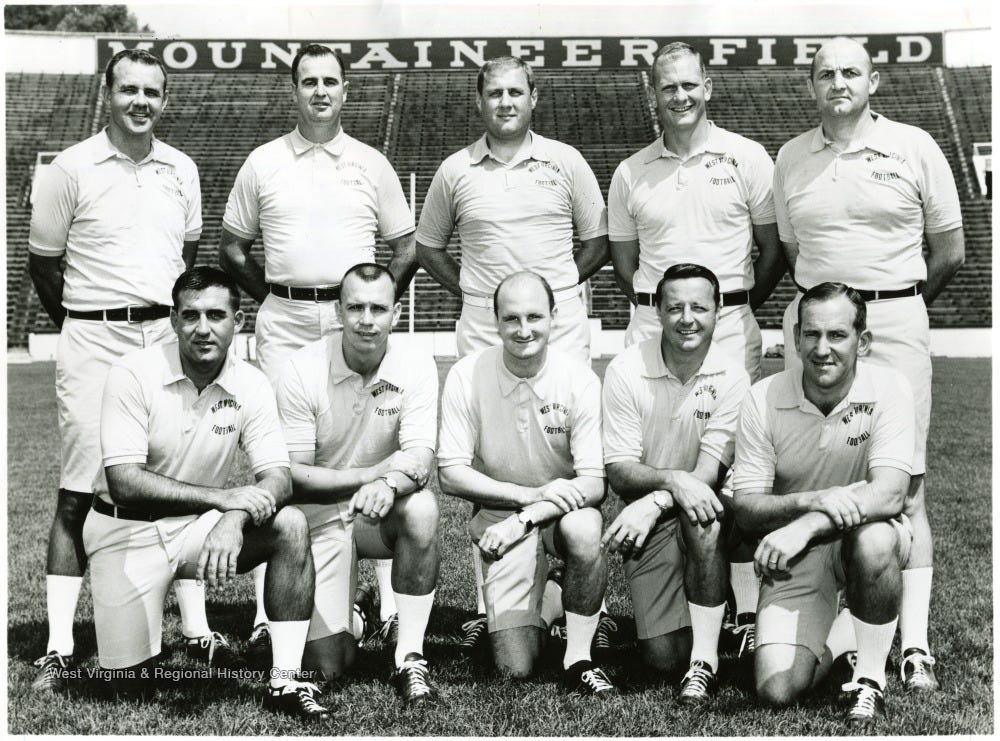The Origin and Rise of Pancake Blocks
Football’s noblest players, offensive linemen, toil in relative obscurity. None of the game’s official statistics track their performance. Instead, they are evaluated by their coaches and others using grading systems that assess whether they carry out their assignments each play.
Given the lack of official measures of the offensive line performance, it is not surprising that unofficial measures periodically crop up; the most famous being the “pancake block.” Pancake blocks occur when a blocker overwhelms a defender and puts him on his back, bringing feelings of triumph to the offensive lineman and shame to the defender finishing the play looking skyward.
Thinking of pancake blocks naturally raises the question of when and why pancake blocks became a thing. Many sources tell us the term arose to describe the work of Bill Fralic, a two-time All America at Pitt and the second pick in the 1985 NFL draft. However, pancake blocks did not originate with Bill Fralic, despite his frequent flapjacking of opponents. We know the term did not originate during Fralic's playing days because newspaper accounts tell us Jim Carlen and his West Virginia staff tracked pancake blocks in 1966, fifteen years before Fralic entered Pitt.

Like other football staffs, Carlen and his coaches jumped on the relatively new trend of awarding helmet stickers to players who met specific criteria. Helmet awards originated at California in the late 1950s under Pete Elliott and assistant coach, Gene Stauber when they awarded stickers for interceptions. Carlen’s system awarded points for deflected passes, recovered fumbles, and pancake blocks, adding a sticker to a player's helmet for every twenty points earned. This motivational tool and the celebration of the awards was noted by WVU’s beat reporters each of the three years Carlen coached the Mountaineers.
While we know pancake blocks gained recognition by the mid-1960s, it is less clear whether Carlen and staff originated or adopted the term from another source, and why the term originated during that period. Offensive linemen presumably put defenders on their backs since blocking became legal in 1884. This clip of the 1916 Rose Bowl (tweeted by Old Football Film) shows it happening before WWI. Similarly, game action images from a decade earlier show defenders on the ground with their offensive counterparts atop them.


One explanation for failing to recognize pancake blocks until the 1960s would be that coaches did not systematically review game film, but the evidence says otherwise. We know coaches reviewed game film before WWI, and graded game film shortly after WWII. Even at the high school level, Massillon Washington High assigned player grades and published them in the local newspaper by 1949. Using game film to grade players was widespread in the 1950s and our first hint to valuing what become known as pancake blocks came late in the decade when Vince Lombardi and the Packers staff awarded bonus points for “knocking opponents to the ground.”
Another possible reason pancake blocks arose during the 1960s is that the easing of restrictions on offensive lineman using their hands and arms made blocking more effective and dominant blocks more frequent. Their increased frequency then made pancake blocks worth tracking as a means of awarding points. But the most likely reason that “pancake blocks” arose in the mid-1960s is simply that the term popped into someone’s head one day and its ability to encapsulate the dominance associated with such plays led to it spreading through the coaching network. It then entered the popular awareness in the 1980s as television broadcasts of NFL and college increasingly used multiple cameras and leveraged instant replay to analyze the battles occurring in the trenches.
Of course, the previous paragraph is speculative. If you have an alternate explanation for the rise of pancake blocks, feel free to comment below.
Football Archaeology is reader-supported. Click here to buy one of my books or otherwise support the site.

